by Mikhael Magid
a prequel to “they stole our bodies: work in Israel”
Introduction
“…why did the serious attitude to life go away?”
Paradox of the working class
The main paradox of the working class of Russia is that it brought the Bolsheviks to power in 1917 and it was the first who rose against the Bolsheviks in 1918. The historian Dmitry Churakov compares the scale of the workers’ protests against Lenin in 1918 with the Russian revolution of 1905 and 1917!
The workers saw this party was not fulfilling its promises. By the summer of 1918, half the workers in Petrograd and hundreds of thousands more workers across the country lost their jobs. The Bolsheviks did not know how to manage industry and it was paralyzed.
The workers of the largest factories and plants began to kick the Bolsheviks out of the Soviets. This was probably the main reason for the ban on re-electing the Soviets and the transition to one-party dictatorship in 1918. Then workers formed alternative Councils – the “Assemblies of commissioner factories and plants”, which united half of the working class of Petrograd and quickly spread to all industrial centers. But this movement was crushed in 1918.
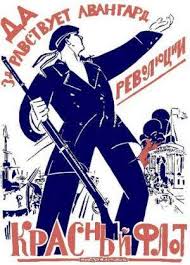 poster of the Kronstadt uprising 1921
poster of the Kronstadt uprising 1921
In 1919-1921 workers many times went on strike against the Bolsheviks putting forward political slogans. In the spring of 1919 the Left SRs (they already had a sort of anarcho-syndicalist program) initiated illegal assemblies and strikes at the big factories of Petrograd. Moreover, along with economic requirements, there was also a demand for free elections to Councils. It was a libertarian social-revolutionary movement with armed clashes between workers of the Left Socialist Revolutionaries and Bolsheviks. Then the left Social Revolutionaries of Petrograd and Northwest Russia voted at their local Congress for the resolution, according to which “Bolshevik and tsarist counter-revolutions are identical”. But this movement was defeated. Hundreds of left SRs were arrested or shot.
The Leninist system called “War communism”, was based on the attempt to destroy market relationship. Later in his work “НЭП и задачи политпросветов” (“The NEP and the tasks of Committees of political education”) Lenin admitted that he and his party in 1918-1921 tried to build “Communist relations”. The party-state apparatus controlled all industrial production, conducting total nationalization in the cities, as well as the state controlling the distribution of goods and labor.
But the Bolshevik leadership was forced to abandon this policy at the 10th Party Congress in March 1921 after a wave of peasant and workers’ uprisings and protests.
The aggressive Union of Bolshevik Party collectives, which were at the head of departments and subordinated to the Central Committee of the Party, and the tsarist bureaucracy, which controlled departments, including the management of operations of the Red army, crushed their opponents. This Union was based on a minority of workers and villagers who received material support from the state. Later, Stalin was to clean up the state apparatus, throwing out or eliminating many former tsarist bureaucrats and forming new cadres.
But still this Alliance was forced to change policy. During the NEP state factories and associations (Trusts) began to sell their products. Some enterprises were privatized.
Initially this did not lead to increased antagonism between the workers and the administration, but on the contrary softened this antagonism, because now workers had an opportunity to eat. In times of military communism the workers were starving and many died of hunger: Petersburg was transformed in 1921 into almost a ghost town… Moreover: according to a study published by historian Sergei Yarov, workers were positive about the privatization of some factories in 1921-1922, because there were higher wages.
In addition, in 1921, Lenin abolished serfdom for workers and allowed them to change jobs at will; it was achieved by strikers in St. Petersburg in February 1921. And it also softened the antagonism and reduced workers ‘ protests.
Nevertheless, conflicts between workers and the administration emerged periodically. But independent trade unions in Russia were banned by the Bolsheviks, destroyed along with Workers’ control (factory committees) and city Soviets in 1918-1921. Formally, these institutions continued to exist, but in practice they were subordinate to party committees, and these committees carried out the instructions of the Central Committee of the Bolshevik party. At the same time the lovely Party Central Committee continued to be the owner of the plants, i.e. the Supreme exploiter. In such circumstances trade unions and factories have the same owner, so do trade unions protect the rights of workers… ?
In 1926-1930 Stalin made a turn from the NEP to a system similar to Lenin’s military communism. Separate protests took place in 1922 – 1930 and in 1962 (a workers revolt in Novocherkassk where some workers were shot).
But in the former USSR, workers were integrated into the system of social partnership. It was a strange system of state paternalism in the factories. Workers and superiors were connected by a mass of informal links. It gave the workers certain advantages (for example, the opportunity to get a cheap tourist trip or the turning of a blind eye to poor quality of work), but paralyzed their resistance. Some Russian supporters of council communism with whom I am familiar called this system “quasi-feudal.”
Also the state provided good social protection for Russian workers and building social housing for them in 1956 -1986. The state in Stalin’s time was a bloody terrorist form of fordism associated with hungeri, but Khrushchev and Brezhnev improved the situation of workers, began to pay pensions to the elderly, built social housing etc. The state bureaucratic apparatus owned property, beginning to exploit workers more gently.
In addition, workers of the USSR were crushed by terror and fear. The KGB and the party committees (two hands of the regime) carefully monitored the behavior of the workers. Dissatisfied workers leaders could be arrested or placed in a mental hospital. Therefore, the population of the USSR was extremely atomized and far less able to protest than the working class of Western and Eastern Europe, where control was weaker. This monstrous pressure spawned disintegration of the collectivist traditions of the working class of Russia.
It is one of the main paradoxes of the Leninist countries: their population is more individualistic than the population of the West. For example, a famous researcher of the two Koreas, Andrei Lankov, notes that North Koreans are far more individualist than the southerners. This is another amazing paradox of Bolshevism: state collectivism, which declared the whole society a “single family” (there was even such a famous propaganda film about the working class of the USSR in 1954: “Big Family”), led to the most extreme, destructive forms of individualism and to total cynicism and to disbelief in the triumph of any utopian idea.
Finally, drunkenness became an important aspect of life in Bolshevik Russia. Perhaps it was a reaction to a hopeless existence, a product of “learned helplessness” (a special phenomenon that psychology studies). It is also possible that this was a reaction to the collapse of utopia. Drunkenness reached monstrous proportions in the proletarian districts.
However, in the former USSR, economic strikes happened occasionally. For example, sometimes there were miners’ strikes. In addition, in 1980, under the influence of Polish “Solidarity”, workers of the Latvian port of Ventspils went on strike. The reaction of the authorities was ambivalent. Usually, they tried to fulfill some of the demands of the workers. At the same time, if the workers persisted, the state used repression.
In addition, spontaneous riots sometimes occurred: mobs attacked police stations. But these riots were usually caused by the violence of police officers. There was, for example, a riot in the city of Murom in 1961 (the authorities responded with repression: a few dozen people were arrested and three were sentenced to death).
But in general, the working class of Russia was not ready for a big fight. In 1989-1991 hundreds of thousands of miners went on strike. In the 1990s a wave of privatizations began and then 50% of the industry was destroyed. But the working class which had lost the traditions of struggle could not offer decent resistance to this.
It was another paradox of the totalitarian system, which appropriated the name “socialism”. Many factories were privatized and looted by representatives of the party bureaucracy and the KGB, who merged with mafia groups. In the overwhelming majority of cases, the working class (including highly skilled or unskilled workers, as well as engineers and other specialists) did not resist. Bolshevik totalitarianism became a real sado-masochistic school of violence and passivity, which prepared the workers for submission to the capitalist bosses.
***
My “vegetarian time”ii
The leadership of the party suffered heavy losses during Stalin’s terror. High-ranking party bureaucrats eliminated each other in the course of terrorist cleansing. The fact that these creatures were killing each other would have even been good for the country, but in parallel they terrorized society to force people to work (for a small salary) by fear.
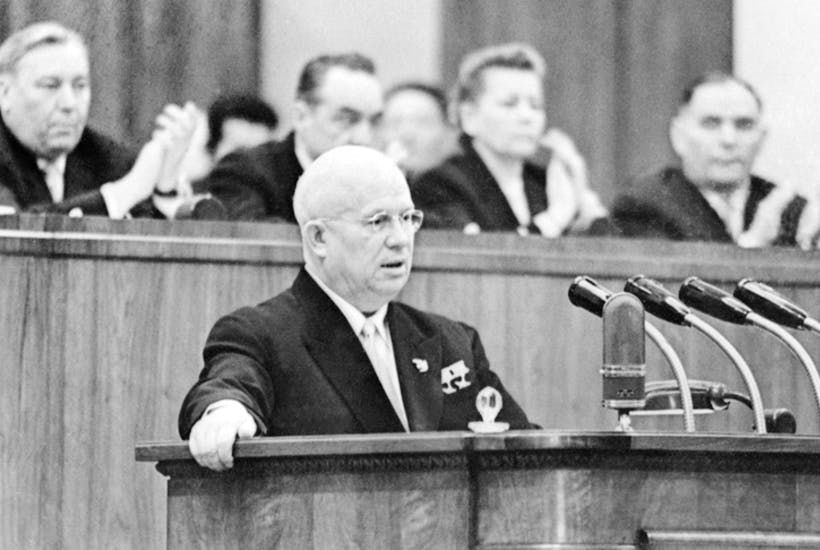 Khruschev at the 20th Congress
Khruschev at the 20th Congress
Soon after Stalin’s death (1953), they held the 20th party Congress (1956) at which they agreed to end the terror. Now the bureaucrats agreed amongst themselves. Everyone was tired of terror. And the terror stopped. Survivors – chameleons, unprincipled party and economic officials wanted to live in peace and to exploit the labor force.
But sometimes it’s hard to get the workforce to be obedient if there’s no terror. It required a new mechanism – a social state.
In a sense, I was lucky. I was born in 1971 and thus, a significant part of my life (20 years) fell during the last two decades of the USSR. This time was not particularly terrible. The dragon of the totalitarian system had lost half of its teeth. Aging leaders were talking about a policy of international detente, world peace, and humane treatment of man.
In 1975, the USSR even signed the so-called Helsinki final act, which guaranteed liberal human rights, which, however, was not carried out in practice.
Intellectuals talked about the “humanism” of the “socialist project”. In the 1956-1968s, it became a fashionable topic, which for some reason was combined with a romantic love of Leninism during the civil war, which was contrasted with the time of Stalin. It was a ridiculous love of left-liberal democrats who sang the “Commissars in dusty helmets” (I imagine what these Commissars would do in reality with the liberal author of the phrase, a bard Bulat Okudzhavaiii ).
Stalin’s USSR was a ferocious state hysterically calling for the killing of all its enemies, from kulaks (wealthy peasants) and their agents in the village to the Jewish “doctor-wreckers”. But in the Khrushchev-Brezhnev era (after the 20th Congress of the Communist Party of the Soviet Union (1956) the rhetoric changed.
So, in principle, if you did not fuck with the system, and peacefully engaged in the Sciences (the “Research Institute system” covered millions of specialists) or in skilled labor in a factory, or the study of the history of antiquity at the University, or worked as a doctor in a large hospital, then life was not so bad.
For the massive part of the population living in large cities, the late USSR was a good country. Not free, but relatively comfortable. Hunger stopped, lay-offs were rare, and in the summer you could go with friends on a camping trip and there sing about the “sun-in-forest” or even some anti-Bolshevik songs (having the opportunity to discharge forbidden emotions) and eat kebabs. Therefore, the majority of the population were relatively loyal to the system.
Of course, anything could happen. The government continued to pursue political enemies, dissidents. But there were very few of them (usually democrats-liberals, right-wing christians, nationalists, occasionally socialists) – only a few thousand people out of the 250 million population of the USSR. But usually the KGB (the political police) didn’t touch the others.
Sometimes there were funny stories. At the banquet of a prestigious Moscow University a professor raised a glass of vodka and said: “Kornilovtsy – go forward!” (Military, opponents of the revolution in 1917). He was in trouble, but he didn’t even lose his job. In the Research Institute where my mother worked, one quirky subject came to the “Scientific Council”, where respected fellow scientists entertained each other with anti-bolshevik jokes, recorded everything on tape, hidden in a briefcase, and then began to blackmail them. But for example, when I once loudly said – “I’ve never been to Lenin’s Mausoleum, since I’m not interested in this dried-up corpse”, nobody did anything to me.
My aunt’s husband, Vadim, the captain of the second rank of the Navy, was less lucky. He was some kind of Russian nationalist and did not like Lenin and Stalin. He joked about November 7 (October 25 according to the old-style Julian calendar), the Day of the October revolution: “It is not a Russian, but a Jewish holiday”. He also made no big secret of his negative attitude to the Communist party. As a result, a colleague wrote a denunciation on him, and he was demoted.
…In the former Soviet Union I lived in the decrepit bureaucratic monster, controlled by senile old men, was no longer so dangerous. It was a strong, though not rich, welfare state, with peaceful daily life, free medicine and education. And life in the 60-80s was more comfortable than the horror of the 90s. This is well remembered by the population, which has not forgiven the democratic-liberals for the catastrophic privatization of the 1990s’ era.
.
The generation of my grandparents
.
The Russian historian and journalist of Radio Liberty Yaroslav Shimov recalls with pleasure his childhood years spent in the USSR in the 1970s in Donbass (Eastern Ukraine). He recalls the steadily established way of life of his grandparents, their stability. My memories of my grandparents are somewhat similar.
My grandfather Boris worked all his life as an engineer in a large factory, my grandmother Sofya was a mild housewife. They loved each other until old age. They received a one-room apartment from the state and seemed to be quite happy in it. My grandmother cooked a beautiful and hearty meal, often ethnic Jewish food, grandfather gave all his earnings down to the last penny to the family. Every evening he drank milk, ate some buns and then watched the news on TV. I was very comfortable in their house.
Although my grandmother worried a lot about various everyday problems, their house looked like an island of stability in an ocean of passions.
I remembered their friends, relatives and many people from this generation. There was something real, solid about them. These people had survived two imperialist wars, the Holocaust and the GULAG and yet had rebuilt the country, erecting from the ruins the factories, hospitals and universities; many were able to organize their own life well. Subsequent generations did not have such courage and perseverance. Even if these people bent and obeyed the power, they were strong. I have not seen any more such generations.
What went wrong in Europe after 1953-1956? At that time workers in berets together with war veterans believed that the revolution and the war should be taken seriously, destroyed the police, burned the tanks of the USSR and created Workers ‘ Councils in Galle (East Germany), Poznan (Poland) and Budapest (Hungary). But what happened after that ? Where and why did the serious attitude to life go away?
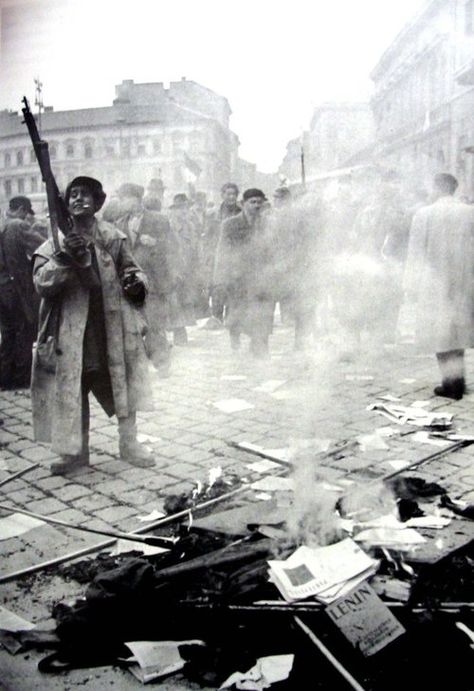 The proletariat of Hungary give an answer to Lenin’s ‘What is to be done?’ – the burning of Leninist apologies for bureaucratic state capitalism, Budapest, 1956 (incidentally, amongst the books not burnt by the Nazis in Germany in the 1930s was Lenin’s “What is to be done?”. Only an admirer of Lenin might find it difficult to understand why).
The proletariat of Hungary give an answer to Lenin’s ‘What is to be done?’ – the burning of Leninist apologies for bureaucratic state capitalism, Budapest, 1956 (incidentally, amongst the books not burnt by the Nazis in Germany in the 1930s was Lenin’s “What is to be done?”. Only an admirer of Lenin might find it difficult to understand why).
In the USSR the spirit of resistance of the working class was broken much earlier, our Budapest ended in Kronstadt in 1921, and yet those generations tried to live life with a sort of dignity.
My grandfather was drafted into the army during the Second imperialist war in 1941. First, he was called to the “Moscow militia”, which recruited intellectuals, professional workers and students. That certainly meant death. Poorly trained units of the Moscow militia were almost completely destroyed by the powerful military machine of the Wehrmacht near Vyazma and in other places on the outskirts of Moscow. Almost no one survived. But immediately grandfather received two more subpoenas from the military. He went with these papers to the military enlistment offices, but officials could not determine where they should take him. Then he went to his factory superiors and asked them what to do. Then he was given a “dispensation” because his company was considered strategic and produced canned food for the army. Thus bureaucratic chaos saved him from death during the battle of two dictatorships – fascist and anti-fascist.
Drunkenness and violence
My childhood was spent in a 90% working-class area, where at least half of the entire male population at the weekend was drunk.v
Drunken husbands beat their wives and children. I remember a scene on Saturday night when an elderly woman was sitting in the yard with her granddaughter, not daring to go up to the house. She explained to the crying granddaughter that if they returned, “the drunk grandfather will beat us”. The old people who lived on the first floor, burned down to death in their apartment as a result of drinking.
Children who were regularly beaten by their parents became aggressive and compensated by meting their anger on weaker peers. Schools in the USSR became the generators of mutual violence. To an even greater extent this applied to the Soviet army, where there was a practice of “dedovshchina”: old servants(“ded” which means granty) in different ways humiliated and beat newcomers. It is curious that in modern Russia this violence at school and army weakened.
My parents were representatives of the intellectual part of the working class. My father worked as a sound engineer on TV, my mother was an employee of the Institute of medical instrumentation. But even in our family, where the shelves were filled with hundreds of books (of Russian and foreign writers), violence and drunkenness flourished. Scandals and even physical violence were the first drops of black poison that poured into my life.
Sometimes I remember the early years of my childhood as a continuous ocean of light. I remember causeless spontaneous joy and love. But parents are gods to their children. Quarrels or fights between them brought disharmony to this world. It’s like when you look at a luminous sky and suddenly you see an giant ugly face appearing.
Natalya Mendeleva
In 1983 my parents went with me to the Baltic States for the summer. The parents then met with a large company of tourists, almost entirely Jews. Among them was a woman of 35 years, Natalia Mendeleva; she came to Latvia with her daughter Alla.
This woman was very thin, had a big semitic nose, huge glasses and… for some reason almost immediately I liked her. She was so much distinguished from the others: today, I’d say she was ironic, intelligent and sincere.
Once the entire company used to walk in the forest. Me and Natalia separated from the others. I asked her questions about the country, questions that I was interested in and to which relatives did not answer.
If we are a free country, why people are afraid to say openly what they think?
If all the factories belong to the people, why does the party decide how to organize it and teach everyone how to carry out economic plans?
If we have equality in our country, why don’t Jews have their own schools in their own language?
Natalia answered in great detail. It was a kind of lecture about totalitarian state:
“The country is governed not by the people, but by bureaucrats who lie that everything belongs to the people. This is the essence of totalitarianism – everything belongs to the state, i.e. the apparatus of officials. This lie is hidden and masked.
The whole system is built on lies. Many people know that this is a lie, someone is satisfied with his financial situation and agrees, someone is just afraid.
The system killed millions of people in the 30s and then continued to kill, but less so, but fear remained in society.
Social equality is a lie, officials live better than others.
Equality of peoples is a lie. The system did not forgive Jews for their sympathy for Israel.
There is no socialism in the USSR. Socialism is a system where property belongs to a self-organized groups of workers, not to the state, socialism is the “Israeli kibbutzim federations”, and maybe what the Solidarity movement in Poland wants.”
For the first time in my life an adult person spoke to me about politics honestly and seriously.
Natalia was an amazing person, because she knew how to talk to a child as with an adult. And there was something in these conversations about life, and in this evening Baltic forest, that remained in my soul forever .
However, with all due respect to this woman, her Pro-Israeli sympathies were wrong.
Ethnic tension
The ethnic cleansing and deportations organized by Stalin and his allies covered 3.5 million people in the USSR and 12-15 million in Eastern Europe before, during and after the Second imperialist war (Chechens, Ingush, Karachais, Volga Germans, Konigsberg Germans, Poles and many others). Ethnic deportations affected about 16-19 million people (equivalent to the population of modern Romania). Many people died as a result of deportations (within the USSR at least 500,000 and this is only as a result of ethnic cleansing). This horror can be compared with the grandiose plans of ethnic cleansing invented by the Nazis, like their “OST” plans [see this : https://en.wikipedia.org/wiki/Gen eralplan_Ost].
But I lived in a “vegetarian time”, then ethnic cleansing stopped and some peoples, for example Chechens and Ingush, received the right to return home.
Nationalism, however, was still alive within the working class. Rather, government officials preferred to pretend that it did not exist. But It existed. Although a large proportion of people did not sympathize with xenophobia and formed close-knit multi-national families and collectives of colleagues or friends, it was not always the case.
Caucasians
In the USSR, some people of the Caucasus, in particular Georgians and Armenians, became a trading stratum, which resembled the role of Jews in Medieval Europe (according to Abram Leon).
And according to Russian-American-Armenian researcher, macro-sociologist Georgy Derlugyan, the government of the USSR widely used the southern regions for the production and domestic export of wine and citrus, as well as for the creation of resort areas. This immediately mobilized the illegal or semi-legal private sector, attracted huge financial flows to the South Caucasus and provoked the growth of intermediary trade. Money flowed like a river to the Caucasus and a new bourgeoisie quickly rose.
Many enterprising Georgians and Armenians involved in this trade, as well as their thieves-in-law (the mafia) who supported them. Together they built trade chains in various sectors of the economy of the USSR, moving across the country.
All this did not escape the eyes of the Russian and other Slavic workers who rejected such growing economic inequality. This was the reason for the nationalist rejection of the Caucasians (although most Caucasians were neither merchants nor gangsters).
In a sense, private capitalism in the USSR originating on the periphery began to decompose and destroy the centralized system of bureaucratic exploitation of the working class replacing it with a system of private capitalist exploitation (later they would be joined by Russian entrepreneurs and thieves-in-law).
In the 1990s, when these trends were combined with the desire of part of the centralized party apparatus to privatize the economy, the USSR was destroyed and substituted by the Russian Federation and other states – a strange synthesis of criminal elements and former party bureaucrats.
It is interesting that the Georgian proletariat suffered primarily from the actions of business. State shops in Georgia, where goods were sold at subsidized prices, emptied: merchants and thieves stole everything they could and took it all to the markets to sell at exorbitant prices. This spontaneous privatization of trade undermined the welfare of workers in the early 1980s. But the working class of Georgia had lost the tradition of resistance.
…I remember Armenian children who were bullied by other schoolchildren and countless stories about Georgians who were portrayed by storytellers as “rich”.
Georgia was one of the most peculiar regions of the USSR. It was an independent state, which was attacked by Lenin in 1921, and which he occupied. Three times popular uprisings or protests against the USSR happened there (1924, 1956, 1989) [ https://en.wikipedia.org/wiki/August_Uprising ; https://en.wikipedia.org/wiki/1956_Georgian_demonstrations ; https://en.wikipedia.org/wiki/April_9_tragedy ]. Georgians had a strong national feeling. In addition, Georgia was the first to embark on the path of capitalism, and this happened quite spontaneously. Understanding the specifics of Georgia, the leaders of the USSR allowed to this country some of the things that they did not allow others . For example, amazing Georgian cinema, relatively free, smart, ironic, a little surreal, has gained popularity not only in the USSR but also around the world.
Baltic States
The Baltic countries (Lithuania, Latvia and Estonia) were independent States integrated into the USSR quite late. The USSR occupied and annexed them in 1939 -1940, then lost them during World War II and re-occupied them in 1944-1945. This was followed by a guerrilla war of local peasants and nationalists against the USSR, which lasted almost 10 years. 150 thousand local residents were deported, tens of thousands died, while only a few million people lived in these countries. A brutal war, in which special agents killed local residents and partisans shot pro-Bolshevik collaborators and Russian settlers, left its mark on the region.
But in the Khrushchev-Brezhnev USSR it was surprisingly quiet. A special world where we went with relatives in the summer, in order to relax.
Every summer we went with relatives to these regions – for holidays. I’ve never seen a landscape more beautiful than this. The coasts, open to all the winds and the brilliance of the sun, the huge blue glittering dome of the sky, the dark blue sea to the horizon, seemed like living creatures.
But the real life of these countries was sad. Latvians and Estonians hated Russians considering them part of the occupation (this fact did not prevent them from renting rooms to tourists). Lithuanians behaved a little more restrained, but only because they felt stronger. Lithuania has always been a bone in the throat of the Empire. It immediately fell away as soon as Russia weakened.
Many Balts refused to answer questions in Russian.
There was a day of the “Sovietization of Latvia”, when almost all the local population drank vodka and openly scolded the USSR.
When I once visited Estonia (I was in a sports camp for children), we were told to protect the flag of the Estonian SSR, hanging over the camp, in order not to allow the Estonians tear it down.
The national resistance against the USSR was passive, but so massive that it was possible to hold these regions only by force.
Here I saw for the first time how strong nationalism can be when it turns into a consolidated mood of the masses.
Soviet Jews
The hatred against Jews by a large part of the Russian working class had a different nature. Jews in the major cities of the USSR in 1918-1940 turned into a kind of intellectual filler of the regime, occupying a powerful position in all structures of the state, science, industry and culture. Nowhere, except perhaps the Ukraine in 1919, were Jews in the majority in the bureaucracy. But there were a lot of them.
Lenin told the Secretary of the Jewish section of Communist Party Dimanstein that the evacuation of Jews during the war into the depths of Russia served a great service for the revolution: “A significant number of Jewish intellectuals came in Russian cities. They foiled that General sabotage”, Lenin emphasized, “with which we met right after the October revolution and which was extremely dangerous to us. The Jewish elements, though not all, sabotaged this sabotage and thus saved the revolution at a difficult moment.” iv .
Therefore, in 1918 some of the workers and peasants, protesting against the Bolshevik dictatorship, identified Bolsheviks with the Jews and demanded “to clean out the Jews and Commissars from the Councils”. Russian anarchists, left socialist-revolutionaries and other forces (opposed to the Bolsheviks) fought against this trend. Unfortunately such a trend existed.
The Stalinist regime moving to Russian Patriotic positions during and after the Second imperialist war inflicted terrible blows on the Jewish intellectuals, and also killed or removed many of the Jewish officials. In addition, some Universities imposed restrictions on Jews.
In my day the Jews could hardly have become the heads of large plants and a career in the party apparatus was almost impossible for them. And yet Jews in large cities were engaged mainly in intellectual work, they became scientists, engineers and doctors. Still the Russian worker had some distrust toward Jews.
In this case, grassroots anti-semitism was cautiously supported by the centralized state. In addition to secret restrictions for Jews, the state eliminated all or almost all schools in the Jewish language. It was an attempt at radical assimilation of two million people. This attitude caused the Jews of the USSR to hate the regime. The love of Zionism and Israel in my generation of Jews has become almost total. We knew the Party didn’t like Jews, so we had no reason to like the Party.
Even the word “Jew” in the USSR had an offensive connotation. “You write ugly like you write Jewish”. This was stated to me by a teacher of Russian language once at school. “Oh, but he is a Jew!”– laughed a few guys in the class…
Although Jewish youth was not religious, thousands of young people gathered near synagogues during Jewish holidays. Some organized secret courses of Hebrew. I first came to the synagogue at the age of 12, driven not so much by religious as by national impulse.
I can also say that we all thought very badly not only of Stalin but also of the Jewish Bolsheviks. We couldn’t understand why they helped to build this shit in Russia. These sentiments were expressed much later by the well-known comedian, the Jew Gennady Khazanov: “To wave the red flag is not a Jewish affair!”. A whole generation of young Jews were vaccinated against everything that smelt of socialism. Today, many of them stand for the Israeli far right.
Many years have passed since then. These years of work have made me a supporter of the radical model of the Workers’ Councils of Budapest 1956, German-Dutch “left communism” (Otto Rule, Anton Pannekoek), anarcho-communism of Bialystok ( https://libcom.org/forums/history/anarchist-movement-bia%C5%82ystok-12012014 ).
Of course I do not support the policy of Israel. Living and working in Israel gave me a deep rejection of nationalism and Zionism. Perhaps, following Franz Kafka, I can say I do not know what I have in common with the Jews, because it is not clear to me what I have in common with myself. We have learned too little about ourselves and our own psyche to identify a person with such a superficial thing as ethnicity.
On the other hand when I see leftists spreading hostility against the people with “white skin”, hostility also directed against Ashkenazi (“white”) Jews I feel nothing but disgust. For me, these leftists are just anti-semites. All this is familiar to me. I’ve seen left-wing anti-semitism since I was a kid.
***
All of this is only a small part of the possible description of the ethnic tension between dozens of peoples of the USSR. Their full description would take several volumes. Not surprisingly, as soon as the Central government weakened a little, the country was destroyed. But here’s a strange thing: at that time almost no one foresaw disintegration.
First job
The first time I got a job in the USSR. It was at a post office in our neighborhood. I was 18. We started work early in the morning, sorted newspapers and letters, then the postmen carried them.
My boss was a woman. Most of the workers were women. Many were forced to support their families because their husbands were alcoholics. Others did so because they divorced their alcoholic husbands. Some loudly discussed all of this in the workplace and they also talked about their sex lives… more precisely, they were talking about its absence.
The work was authoritarian and chaotic. We were led by a woman who had no formal post. But the boss was incompetent and obeyed her in everything.
Two men who worked with us smelled of alcohol almost every morning and I can’t understand how they could work at all.
On the other hand, it gave us some advantages. If I did not complete the work on time, I told some of my colleagues that I’d drunk yesterday so I’m not thinking straight today. They smiled and nodded comprehendingly.
Only one unusual woman was brought to me by fate in this job. She never drank alcohol, never ate meat, and her speech was unexpectedly clear and intelligent. At the beginning of the 20th century, this woman would have been recognized as an activist of a revolutionary socialist organization. But there were no such organizations in the Soviet Union.
One day after work, I couldn’t stand it. She was too different. I asked – who are you?
It turned out that she was a follower of Buddhism. She preferred the simplest work which would not make her thoughts chaotic and would not excite the heart. She loved peace, purity of the body, and purity of mind, dreaming of her Nirvana. She was the only person in my job with whom I could talk about some things, not related to work, alcohol or lack of sex…
The only intelligent worker in my work was not a social revolutionary, but a Buddhist mystic! I have nothing against Buddhists, but I must say that it was an impressive result of 70 years of Bolshevism! Later, in the Russian Federation, I saw a similar picture in factories. I hardly ever met ideological workers-anarchists or socialists. It is much more believable that the modern thinking worker will become a religious sectarian.
To be continued…
***
Footnotes
i According to modern studies of economists, prepared by a group of one of the leading Russian and European economists Sergei Guriev, the economic system of the USSR in 1928-1940 did not exceed the tsarist system. Stalin’s modernization reached a slightly higher GDP growth, but at the same time less productivity growth than the tsarist trend. But the Bolshevik system had many more victims. https://scholar.princeton.edu/sites/default/files/golosov/files/cggt_revision.pdf
ii “Vegetarian time” – Russians use these words to call periods of liberalization.
iv Агурский М. Идеология национал-большевизма – Paris: YMCA-press, 1980.
http://yakov.works/library/01_a/gu/rsky_04.htm
v SF note: even today, the average Russian drinks over 10 litres of alcohol during the 10 days of the New Years holiday, during which 1.5 billion liters of alcohol are consumed. That is a little more than 10 liters (2.6 gallons) per person.
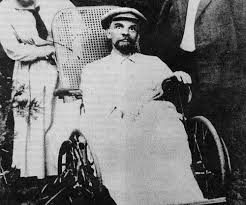
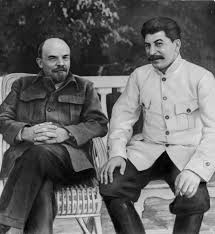

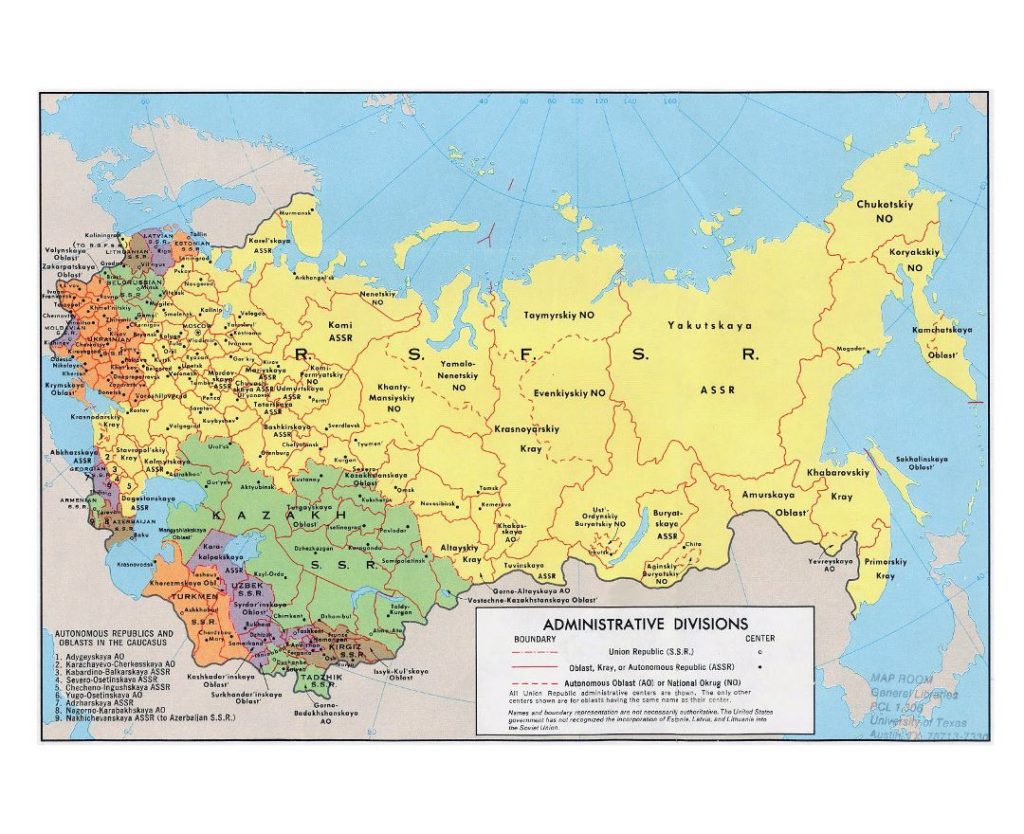
Leave a Reply